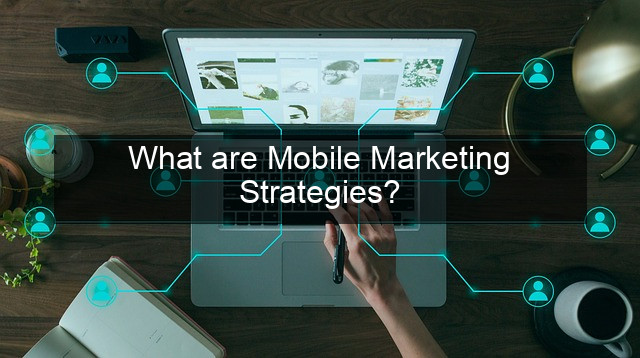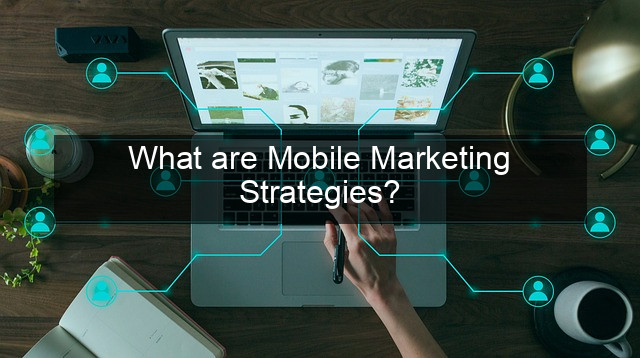What are Mobile Marketing Strategies?

- What are Mobile Marketing Strategies?
- What are Mobile Marketing Strategies?
- App Store Optimization (ASO)
- Keyword Research and Optimization
- App Ratings and Reviews
- App Store Listing Optimization
- Social Media Marketing
- Targeted Advertising
- Influencer Marketing
- Location-Based Marketing
- Geofencing
- Beacon Technology
- Conclusion
- Frequently Asked Questions

What are Mobile Marketing Strategies?
The world has gone mobile. People are constantly connected, glued to their smartphones and tablets. This shift in behavior has revolutionized the way businesses interact with their customers, making mobile marketing not just a trend, but a necessity. Mobile marketing strategies encompass a range of tactics designed to reach and engage your target audience where they spend most of their time – on their mobile devices. From in-app advertising to SMS campaigns, the possibilities are vast and the potential for growth is immense. But navigating this dynamic landscape requires a strategic approach. Understanding your audience, choosing the right channels, and crafting compelling content are all crucial for success. This article will delve into the core components of effective mobile marketing strategies, providing actionable insights to help you leverage the power of mobile and achieve your business objectives.
App Store Optimization (ASO)
Keyword Research and Optimization
Just like SEO for websites, ASO relies heavily on keywords. Identifying the right keywords that your target audience uses to search for apps like yours is paramount. Thorough keyword research helps you understand the language your potential users employ and allows you to incorporate these terms into your app’s title, description, and keywords field. This optimization increases your app’s visibility in app store search results, driving organic downloads and expanding your reach.
Effective keyword optimization involves finding a balance between relevance and search volume. High-volume keywords are competitive, while low-volume keywords may not attract enough traffic. The key is to target a mix of both, focusing on long-tail keywords (more specific phrases) that cater to niche audiences and have less competition.
Regularly monitoring and analyzing keyword performance is essential. Track which keywords are driving the most downloads and adjust your strategy accordingly. The app store landscape is constantly evolving, so staying up-to-date with the latest trends and user behavior is crucial for maintaining a competitive edge.
App Ratings and Reviews
Positive ratings and reviews are powerful social proof that can significantly influence a user’s decision to download your app. Encourage satisfied users to leave reviews and promptly address any negative feedback to demonstrate your commitment to customer satisfaction. Responding to reviews, both positive and negative, shows potential users that you value their feedback and are actively working to improve the app experience.
A high average rating can boost your app’s ranking in search results, making it more visible to potential users. Furthermore, positive reviews build trust and credibility, making users more likely to choose your app over competitors. Actively solicit feedback from users and implement improvements based on their suggestions to enhance the overall app experience and garner positive reviews.
Monitor your app’s ratings and reviews regularly and address any emerging issues promptly. Engage with users who leave feedback, both positive and negative, to demonstrate your commitment to providing a high-quality app experience. This proactive approach can significantly impact your app’s success in the competitive app store landscape.
App Store Listing Optimization
Your app store listing is the first impression potential users have of your app. It’s crucial to make it count. A compelling app title, engaging description, and high-quality screenshots and videos are essential for capturing attention and conveying the value of your app. Highlighting key features and benefits in a concise and persuasive manner can significantly influence download rates.
Choose visually appealing screenshots and videos that showcase the app’s functionality and user interface. Use clear and concise language in your app description, focusing on the benefits of using your app and addressing the user’s pain points. A well-optimized app store listing can significantly improve your app’s conversion rate, turning browsers into users.
Regularly update your app store listing with new features, improvements, and seasonal promotions. Keeping your listing fresh and up-to-date demonstrates your commitment to providing a quality app experience and can attract new users. A dynamic and engaging app store listing can be a powerful tool for driving downloads and achieving your mobile marketing goals.
Social Media Marketing
Targeted Advertising
Social media platforms offer powerful targeting capabilities that allow you to reach specific demographics, interests, and behaviors. Leveraging these tools enables you to deliver highly relevant ads to your ideal audience, maximizing your return on investment. Precise targeting ensures that your message reaches the right people, increasing the likelihood of engagement and conversions.
By defining your target audience based on demographics, interests, and behaviors, you can tailor your ad campaigns to resonate with their specific needs and preferences. This targeted approach increases the effectiveness of your ads, driving higher click-through rates and conversions. Utilize the advanced targeting options available on social media platforms to refine your audience and optimize your campaign performance.
Continuously monitor and analyze the performance of your targeted ad campaigns. Track key metrics such as click-through rates, conversion rates, and cost per acquisition to identify areas for improvement and optimize your targeting strategy. A data-driven approach is essential for maximizing the effectiveness of your social media advertising efforts.
Influencer Marketing
Partnering with influencers who have a strong following within your target market can significantly amplify your brand message. Influencers can introduce your app to a new audience and build credibility through authentic endorsements. Collaborating with the right influencers can be a highly effective way to generate buzz and drive downloads.
Choose influencers whose values align with your brand and whose audience matches your target demographic. Collaborate on creative campaigns that resonate with their followers and showcase the value of your app. Authentic and engaging influencer marketing campaigns can significantly impact your app’s visibility and adoption.
Track the performance of your influencer marketing campaigns to measure their effectiveness and identify areas for improvement. Monitor key metrics such as reach, engagement, and website traffic to assess the impact of your collaborations. A data-driven approach is crucial for optimizing your influencer marketing strategy and achieving your mobile marketing objectives.
Location-Based Marketing
Geofencing
Geofencing allows you to target users within a specific geographic area with tailored messages and offers. This is particularly effective for businesses with physical locations, enabling them to reach potential customers in their vicinity. By sending timely and relevant notifications to users within a defined radius, businesses can drive foot traffic and increase sales.
Utilize geofencing to promote special offers, events, and promotions to users who are near your business. This targeted approach can significantly increase engagement and drive conversions. By delivering personalized messages based on location, businesses can create a more relevant and engaging experience for their customers.
Analyze the performance of your geofencing campaigns to optimize their effectiveness. Track key metrics such as conversion rates, foot traffic, and sales to determine the impact of your location-based marketing efforts. A data-driven approach is essential for maximizing the ROI of your geofencing campaigns.
Beacon Technology
Beacon technology utilizes Bluetooth Low Energy (BLE) signals to transmit information to nearby mobile devices. This allows businesses to deliver highly targeted messages and offers to users within a very specific location, such as a particular aisle in a store. Beacon technology can enhance the in-store experience and drive sales by providing timely and relevant information to shoppers.
Implement beacon technology to deliver personalized recommendations, promotions, and product information to customers as they browse your store. This targeted approach can increase engagement and encourage purchases. By providing relevant information at the point of decision, businesses can enhance the customer experience and drive sales.

Monitor the performance of your beacon technology deployments to optimize their effectiveness. Track key metrics such as engagement rates, conversion rates, and sales to assess the impact of your beacon marketing efforts. A data-driven approach is essential for maximizing the ROI of your beacon technology investments.
Conclusion
Mobile marketing strategies are essential for businesses looking to thrive in today’s digital landscape. By understanding your audience, leveraging the right channels, and crafting compelling content, you can effectively reach and engage your target market on their mobile devices. From app store optimization to location-based marketing, a comprehensive mobile marketing strategy can drive growth, increase brand awareness, and ultimately achieve your business objectives. Embrace the power of mobile and unlock the potential of this dynamic marketing channel.
Frequently Asked Questions
What are the key components of a successful mobile marketing strategy?
A successful mobile marketing strategy involves understanding your target audience, choosing the right mobile channels, creating engaging content, and tracking your results to optimize your campaigns.
How can I measure the success of my mobile marketing campaigns?
Key performance indicators (KPIs) such as downloads, engagement, conversions, and return on investment (ROI) can be used to measure the success of your mobile marketing campaigns.
What are some common mobile marketing mistakes to avoid?
Common mistakes include neglecting ASO, failing to personalize content, ignoring user feedback, and not tracking campaign performance.
What is the importance of mobile-first indexing?
Mobile-first indexing means Google prioritizes the mobile version of your website for indexing and ranking





